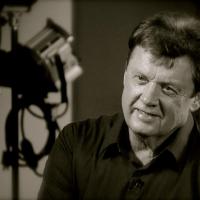
Flames of Revival: Layman's Prayer Revival
| Walk through the streets of any large city and you will hear the sounds of busy activity. But imagine the streets of New York City, Pittsburgh, our nation's capital, as well as major cities along the eastern seaboard silent everyday at noon as people join together to pray. Too good to be true? It happened in the 1850's and it all started at the Fulton Street Church in New York City. In 1857, the leadership of the Fulton Street Church in New York City saw a sharp decline in church attendance. They tapped Jeremiah Lanpher to lead the effort to reach the unchurched of the city. Lanpher was a former merchant with no formal theological training. He wasn't sure how to proceed, so he organized a noonday prayer meeting. He printed up notices and handed them to anyone who would take one. On the day of the meeting, Lanpher waited. Jeremiah Lanpher announced he was a city missionary and there was going to be a prayer meeting. No one showed up and he began praying. Twenty minutes later he heard someone coming up the stairs and that first time maybe two or three joined him. The next time someone joined him and then the room was filled. And so he went from one room to two rooms to three rooms and he went to the church sanctuary. In the following months, noonday prayer meetings sprung up all across the city. In fact, many factories blew the lunch whistle at 11:55 a.m., giving workers the chance to rush to the nearest church to pray for an hour. Churches of all denominations were filled with people praying on their lunch break. This caught the attention of the media. The Layman's Prayer Revival had the motivation that we must pray one hour. Jesus said, 'Could you not tarry with me one hour?' And they wanted to go pray during their lunch hour so there was fasting and great prayer. The editor of the Herald Tribune was looking out of his window at a few minutes before twelve and he was shocked to see men running from their places of business, bumping into one another and within a minute they all disappeared into churches. And he said what's going on? So he sent a reporter down to see what it was and he said, 'they are all praying.' The next day he got all of his reporters together, put them on horses to cover the whole city. They came and said there must be fifteen thousand people. So he began to write stories, and then before you know it, there were twenty-five thousand. The more stories he wrote the bigger the meeting got. And he put them on horse to cover the whole city and they came back and they said there must be about forty thousand men praying through the lunch hour. What's happening here? Because New York was center of the world at that time, all over America, in Cleveland, Chicago, Denver, Los Angeles, people would read the New York papers and then revival began to break out. Prayer meetings organized by lay leadership spread like wildfire across the United States. By 1859, more than one million unchurched Americans were won to Christ. God was pouring out His spirit, preparing America for one of its darkest chapters in history. The layman's prayer revival took place two years before the Civil War. And think of all of the thousands men who were slain and cut down in battle. The only positive thing we can say is that many of them knew the Savior before they went into that battle. Imagine if we all took an hour out of our busy to pray -- what could happen? |




